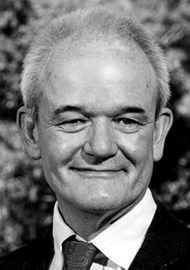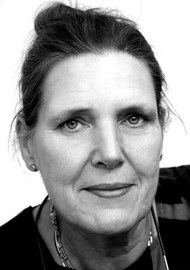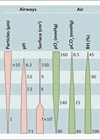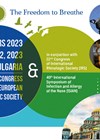At ERS2023, Prof PJ Wormald will lecture on the past, present and future of treating chronic rhinosinusitis (CRS). We caught up with him recently to hear about the major improvements, the hypes and his dreams for the future of treating patients with CRS.
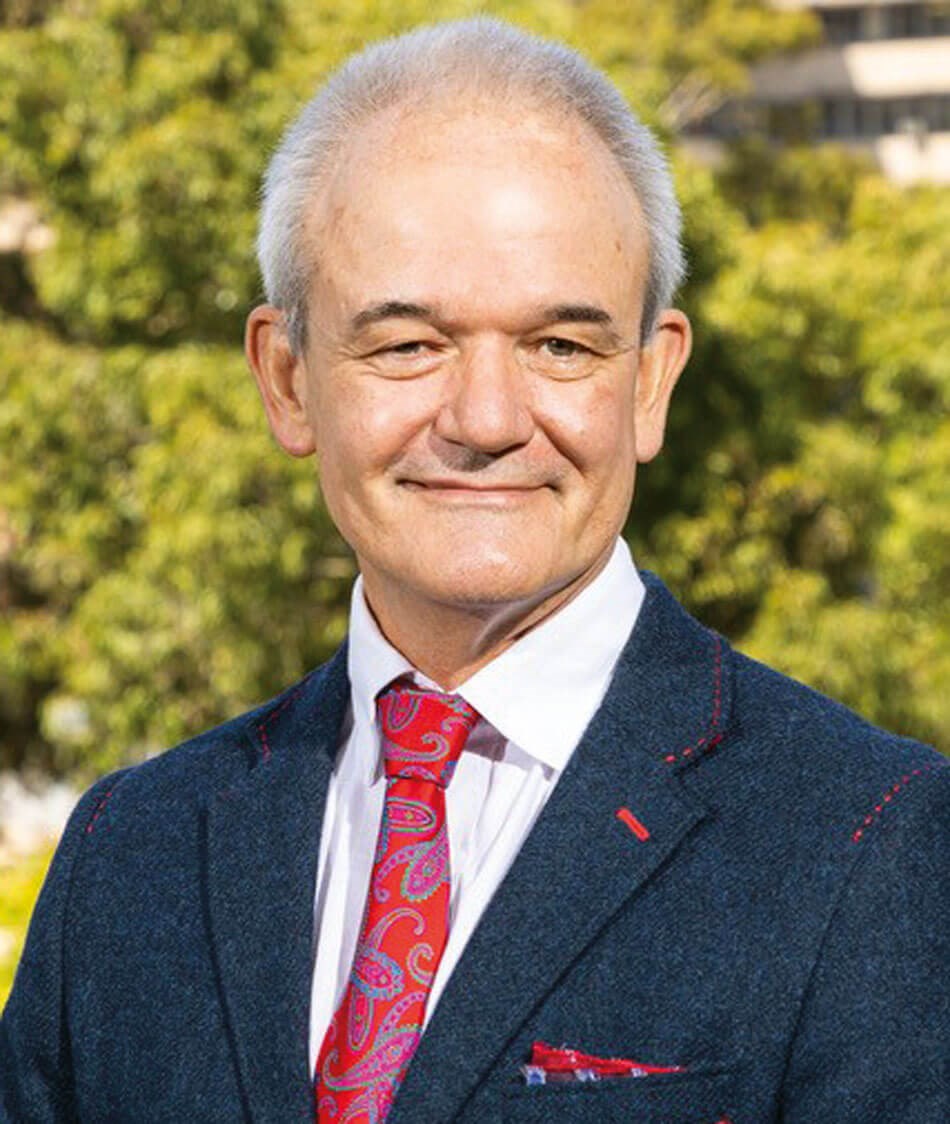
Prof Peter John Wormald.
Which past treatment have you used often that you have now totally abandoned?
The treatment that I’ve used often in the past is the frontal sinus mini trephine. This was a kit made by Medtronic, where a three-millimetre incision was made and a trephine with a one-millimetre drill bit placed through the eyebrow into the frontal sinus. The incision was made through the hairs of the eyebrow into the frontal sinus and allowed a little cannula to be placed into the frontal sinus, through which you could inject fluorescein-stained saline. This allowed the surgeon to identify and follow the frontal sinus drainage pathway when doing the ethmoidectomy from below and explore that frontal sinus quite safely by following the fluorescein trail.
This kit is no longer made, and we’ve abandoned it because using standard incisions and standard burrs creates too large an incision, which is unsightly and not readily accepted by patients. So, we no longer use the mini trephine.
Which past treatment still serves you well?
Well, along the same lines, we still use a canine fossa trephine to access a very badly diseased maxillary sinus. We find that trying to clean out a maxillary sinus that’s full of polyps and fungal debris through the natural ostium is very time consuming, and we don’t get a good clearance of all the fungal debris. We really feel that removing all of the disease in these patients is a very important part of creating a significant reduction in the disease load so that when the patient heals, we don’t have that ongoing immune stimulation from the bits of fungal mucus and polyp that have been left behind in the maxillary.
"I think that in the future, the indications for balloon dilatation will become clearer, and that the utilisation of balloons will become less"
We utilise the small incision underneath the lip on the anterior face of the maxillary sinus and a five-millimetre burr to create a trephine just large enough to put a microdebrider blade through the anterior face of the maxillary sinus. This allows us to, in a very quick and easy manner, completely clear that maxillary sinus of disease.
What do you think are the main improvements in the treatment of CRS in the past decade?
Well, I’m often asked what I think one of the most important developments in the management of CRS has been and I always have the same answer. I think that our ability to deliver topical steroids, such as Pulmicort or mometasone, in a nasal wash has significantly changed how our patients heal and how we are able to control polyp recurrence and improve mucosal health in the long term after sinus surgery. I think this has been an absolute game changer for me in my practice and allows patients who otherwise would have had significant disease recurrences to be well controlled and to maintain their sinus health for the long term.
SEE ALSO
What do you think is a hype now but will not last?
I think that balloon dilatation of sinus ostia has had significant hype, especially in the USA, with huge numbers of patients undergoing balloon dilatation for either disease that’s not visible on CT scan or for non-significantly diseased sinuses. I think that in the future, the indications for balloon dilatation will become clearer, and that the utilisation of balloons will become less.
How will the treatment of CRS evolve over the next decade?
We’ve seen some exciting developments in the biologics, with very impressive results being achieved with at least some of them. If we think of dupilumab, the anti-IL-4/IL-13 biologic, the improvements in these patients seem to be quite impressive, and better than the other biologics. I think the role of the biologic will continue to evolve and be refined over the next decade.
I think the other important evolution is going to be understanding the role of the microbiome and developing treatments where we can actually restore the microbiome in the nasal cavity and sinuses after surgery.
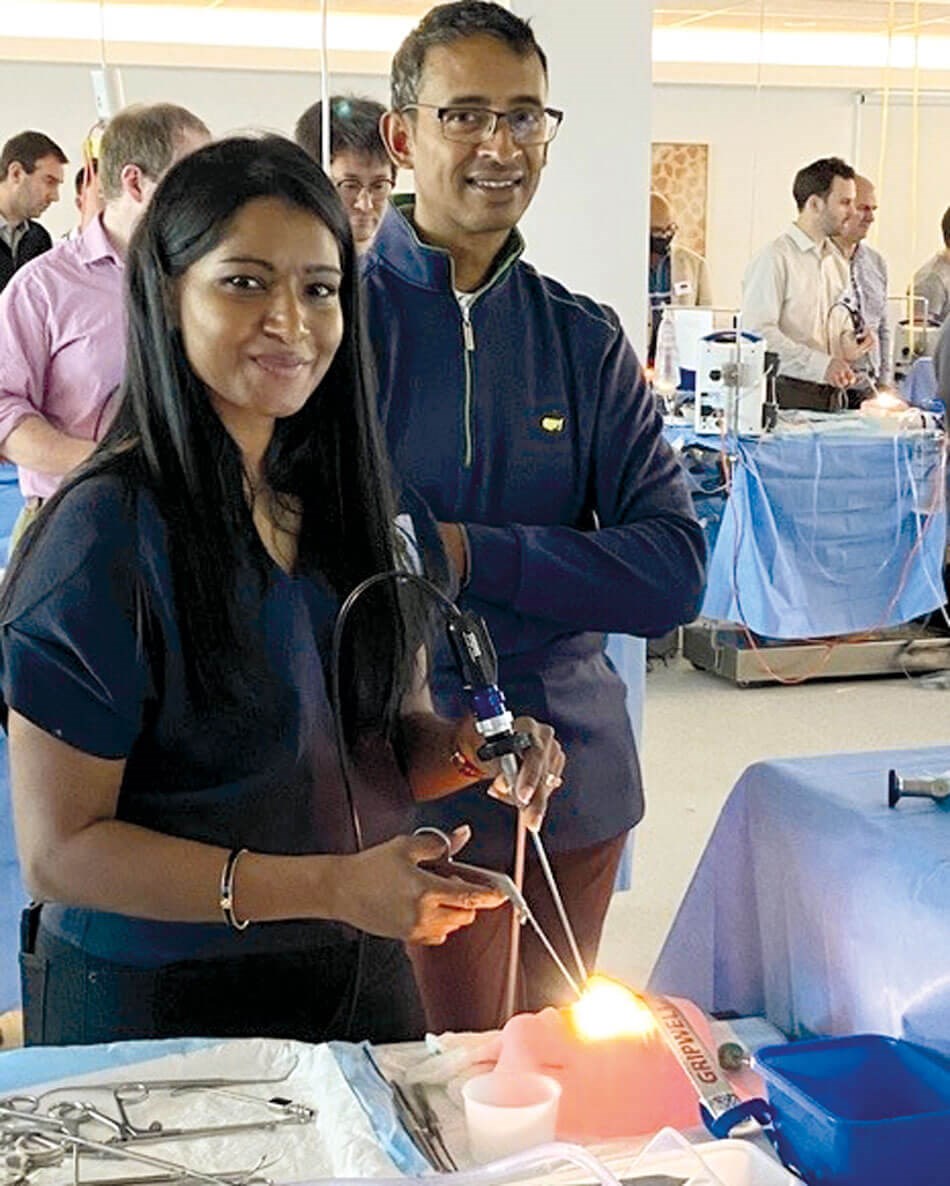
Surgeon been guided through a dissection on a
model-based advanced frontal sinus course.
What do you expect?
I expect that the role of biologics will continue to evolve. However, they are not going to become an everyday treatment for all patients with chronic sinus disease. These biologics are far too expensive and, when the utilisation is ceased, it seems that the symptoms and the disease return. So, they are only going to be used in those patients who have had very good surgery, who then still relapse. It’s a very small patient cohort that will continue to be managed with these biologics.
"I think we’ve seen some exciting developments in the biologics, with very impressive results being achieved with at least some of them"
I do expect us to see ongoing research in the role the microbiome plays in the nose, and the immunological effect that restoring that microbiome has on the nasal cavity and sinuses. I’m very excited to see how this is going to evolve over the next 10 years.
What is your dream?
My dream is that we will continue to improve surgeons’ surgical skills. I am constantly disappointed at the level of surgical skill and understanding that I see when I teach courses around the world, where surgeons don’t understand the anatomy of the frontal recess, or don’t have the surgical skills necessary to be able to safely dissect a frontal recess. My dream is that we will develop surgical teaching tools and methods that will allow these surgeons to develop their surgical skills until we have the majority of surgeons able to safely dissect a frontal recess.
What do you expect will be the biggest game changer?
I think that the recent development of 3D-printed models that are realistic, dissect in exactly the same manner as a cadaver, and that have complex frontal sinus anatomy will be the game changer that allows us to be able to teach surgeons to understand the anatomy on the CT scan and to do a complete surgical dissection of the frontal recess. It’s not only the reproducibility of the models, but the fact that the models come from actual patients’ anatomy, and that the techniques that we can teach and the instrumentation that we use are exactly the same as what the surgeon would utilise in the operating theatre. I think that this is going to be a game changer in terms of evolving and improving surgical training. It will also allow us to evaluate surgeons and certify surgeons to be able to operate on frontal recesses once they are able to demonstrate that they understand the anatomy and are able to surgically dissect a frontal recess safely.



